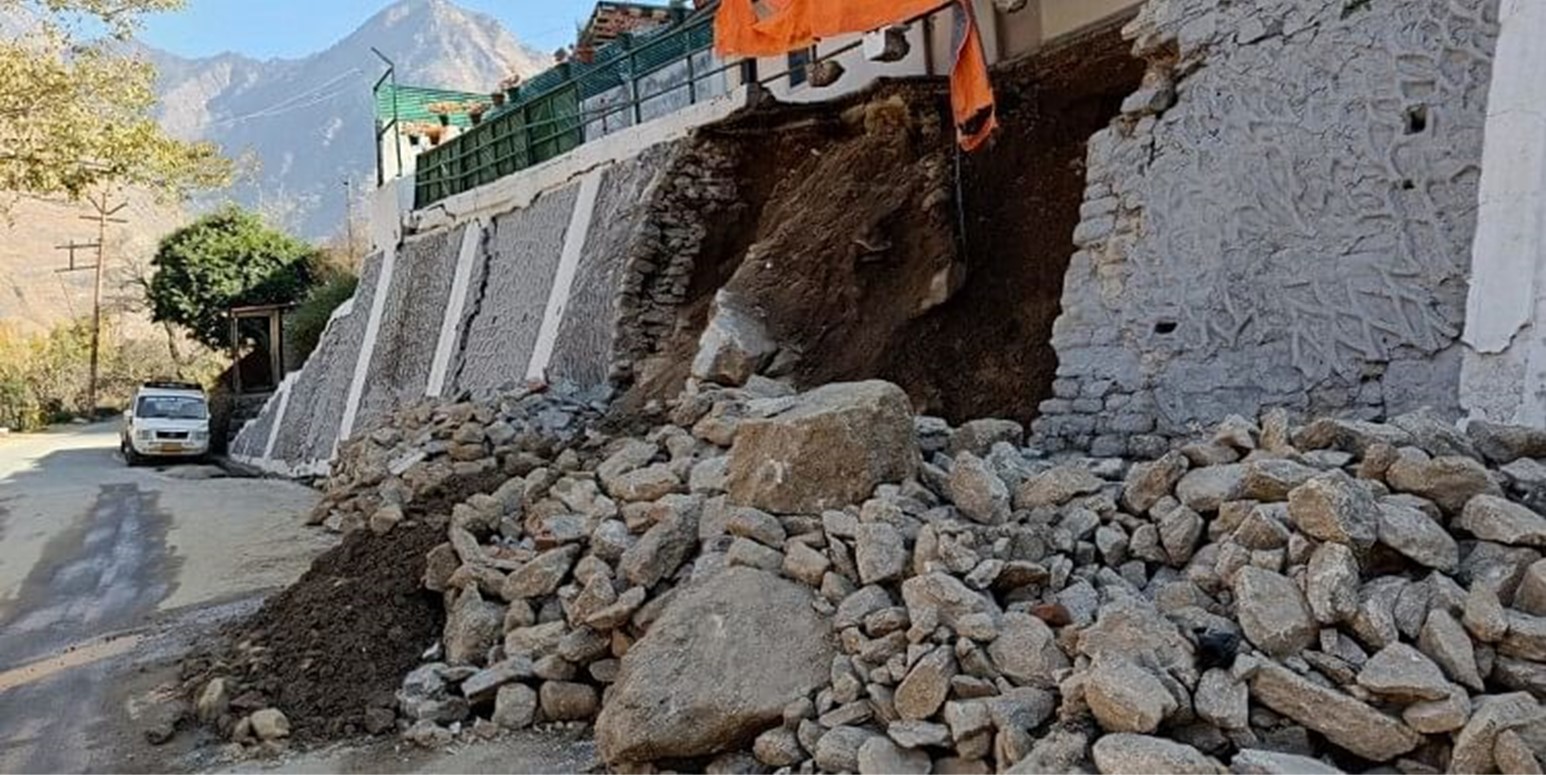Today, the internet is filled with the news of Joshimath sinking. With the blame game being played among the stakeholders and governments, the biggest sufferers are the local residents and the Himalayas. Undoubtedly, there is a need to lay emphasis to the problem and provide a solution. But the intelligence lies in learning the lesson from the crisis, so that such anthropogenic disasters cease to happen.
Cry unheard for 47 years
The crisis of Joshimath did not happen overnight. During 1970s Joshimath was flooded by Alakananda River which resulted in land subsidence and cracks in walls. The government formed a committee under M.C. Mishra, Divisional Commissioner of Garhwal.
The committee submitted a report claiming the area to be geographically unstable. The heavy construction activities since 1962 without a proper drainage led to the percolation, ultimately causing landslides. The committee also condemned the deforestation in the area. Finally, the report advised to permit construction according to the bearing capacity of the soil.
Still, in the name of economic prosperity and dreams of development, Joshimath was left to wait for its unfortunate collapse. Now, Joshimath is once again facing the same crisis and the causes are also the same. Which means, even after 47 years neither was the drainage system reformed nor was the construction regulated. And consequently, the recent subsidence is not only worse but irreversible.
According to Rajeev Upadhyay, professor of geology at the Kumaun University in Nainital, “The villages and townships in the northern part of Uttarakhand are located along the major active thrust zones within the Himalayas and are very sensitive because of the fragile ecosystem of the region.” The other land subsidence prone areas comprise Tehri, Mana, Dharasu, Harsil, Gauchar, Pitthoragarh.
Joshimath is the start not the end
Tehri too has now started witnessing cracks in houses. The town has reported landslides in nearby villages. Mana, being militarily crucial, is linked with highways. The highway construction is causing deforestation at a large scale and can lead to landslides. Harsil is the also the point of military operations and was hit by the devastation of 2013 floods.
There are certain aspects that are to be taken in account regarding the Joshimath subsidence. First of all, these are hilly areas that have sand and stones beneath the soil. Secondly, the steepness in the area provides extra velocity to the rivers causing washouts. And lastly, these areas share border with China and hence, have a crucial importance in national security. This makes it very clear that the ecosystem of Himalayas is fragile and the geographic location is very crucial.
Need for government actions
So, development and military presence cannot be rejected outright. Instead, there should be a proper plan and regulation of developments in such areas. The government should develop the entire area according to the bearable capacity of land and the environment. And, the authorities should also be vigilant for any breach of the environment. The military presence and construction should be in line of the same plan.
Apart from that, the aspect of pilgrimage and tourism cannot be completely ignored. Joshimath is the town on the way to Badrinath and hence, receives a large tourist population. The people generally show an unethical and low etiquette behaviour while travelling and end up becoming the cause of biotic disturbance. Himalayas is also the home of many pilgrimage sites. But, due to their geographical sensitivity the developmental projects should be only to provide basic amenities without jeopardising the sanctity of the place.
People too have a blame on their head
The government should also impose some restrictions on people travelling to these areas. After the 2013 Kedarnath tragedy, the government has set the limit of travellers in Char Dham. This model should be applied to the whole of the hilly area.
The people of Joshimath are also responsible for the subsidence up to some extent. The area is in permanent tectonic zone, which might be active in present times. The cultivation practices at the slopes and building non-permitted homes worsened the situation. Out of 3900 houses only 1,790 houses submit house tax as rest of the houses are constructed without permission.
It is high time that the government and the people wake up. Otherwise, Joshimath could be the first in the list of our failure.
Support TFI:
Support us to strengthen the ‘Right’ ideology of cultural nationalism by purchasing the best quality garments from TFI-STORE.COM

